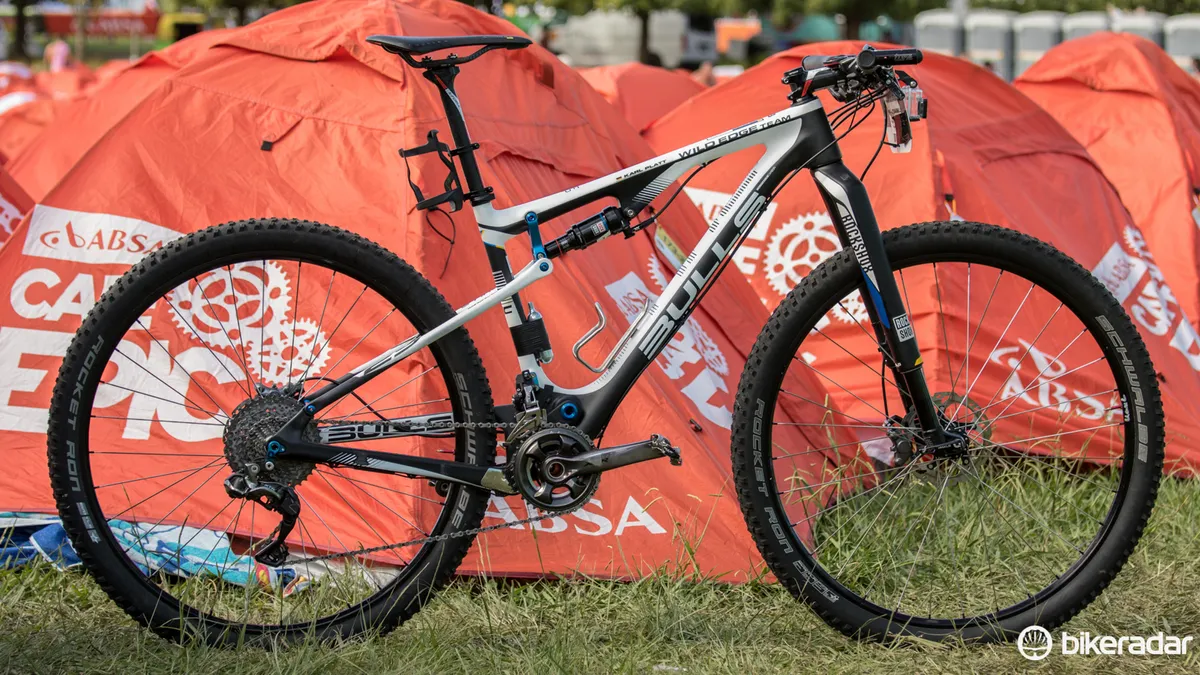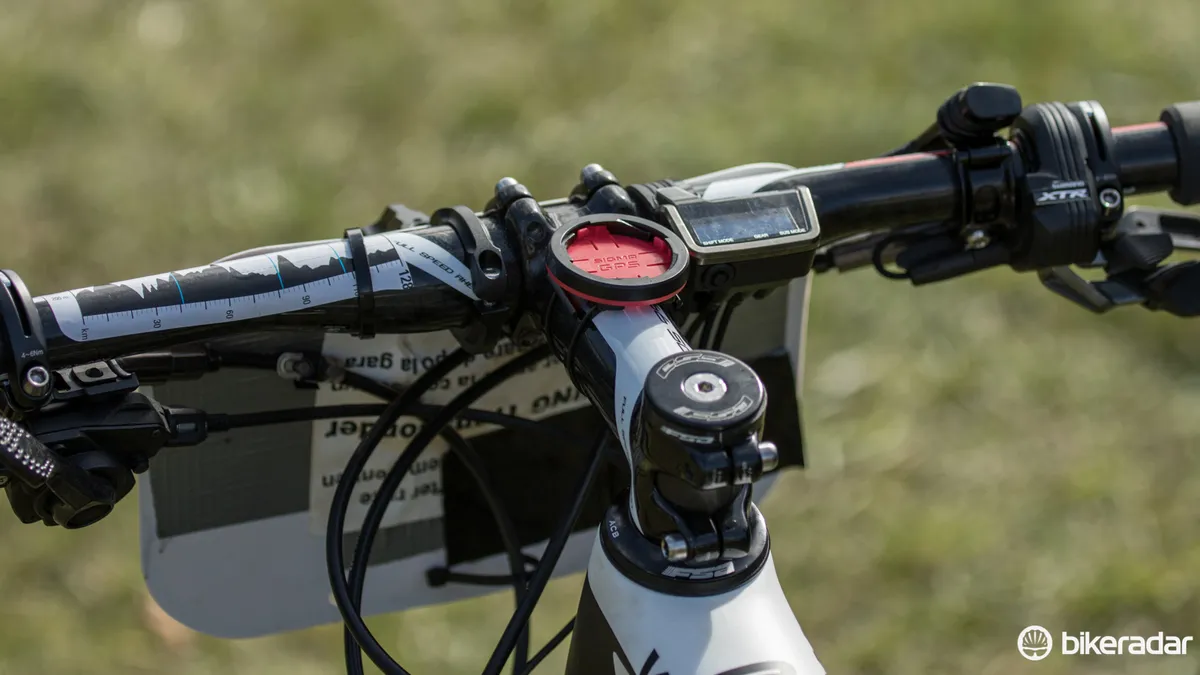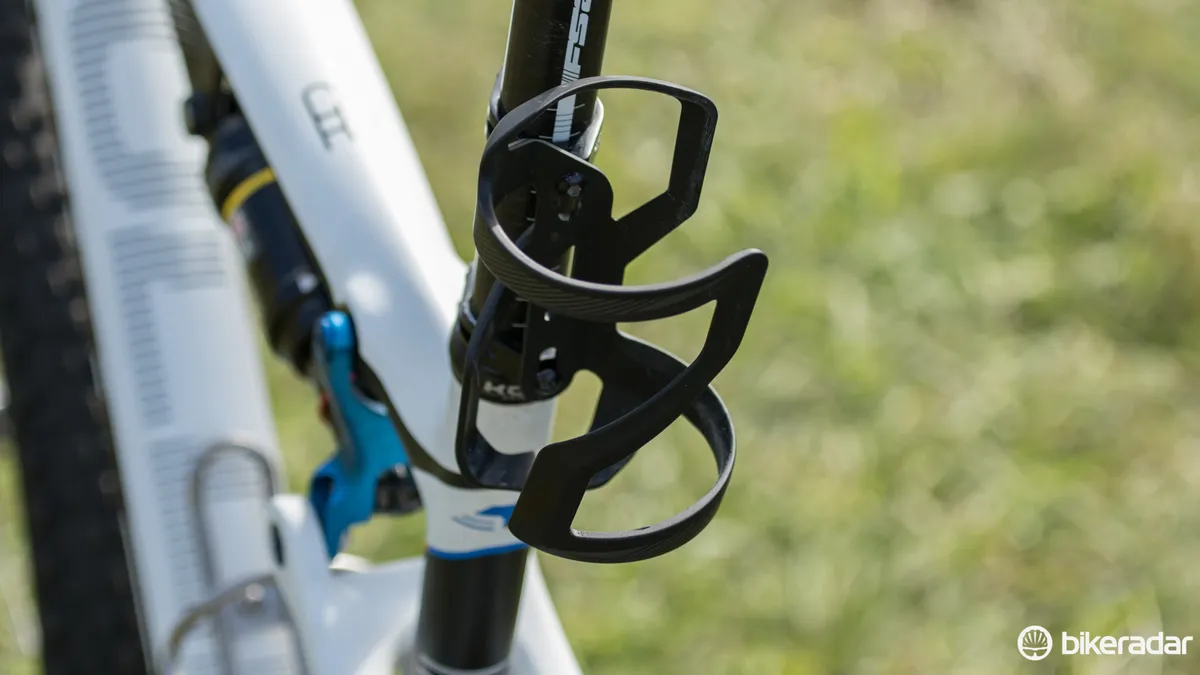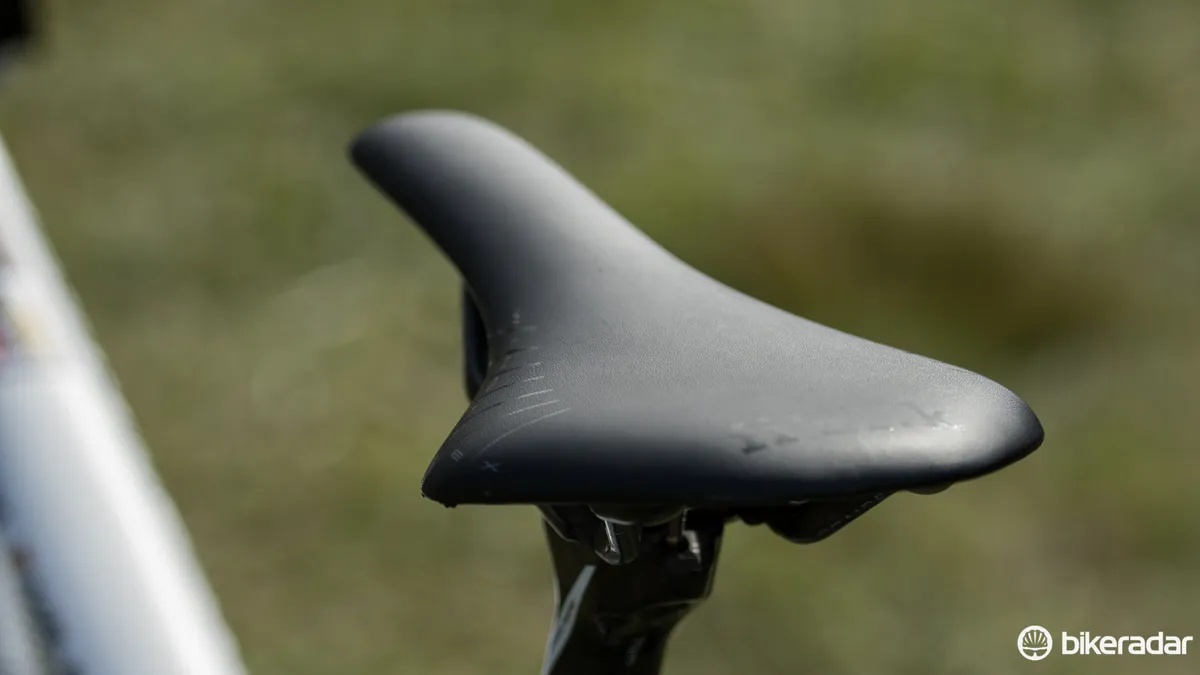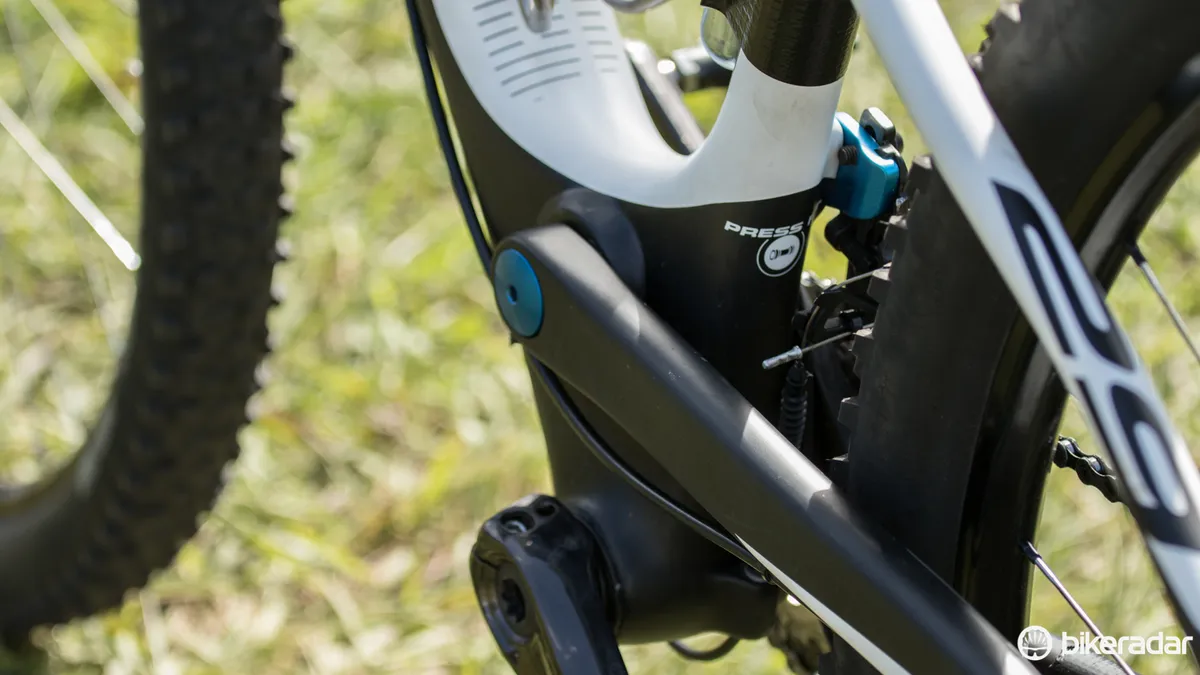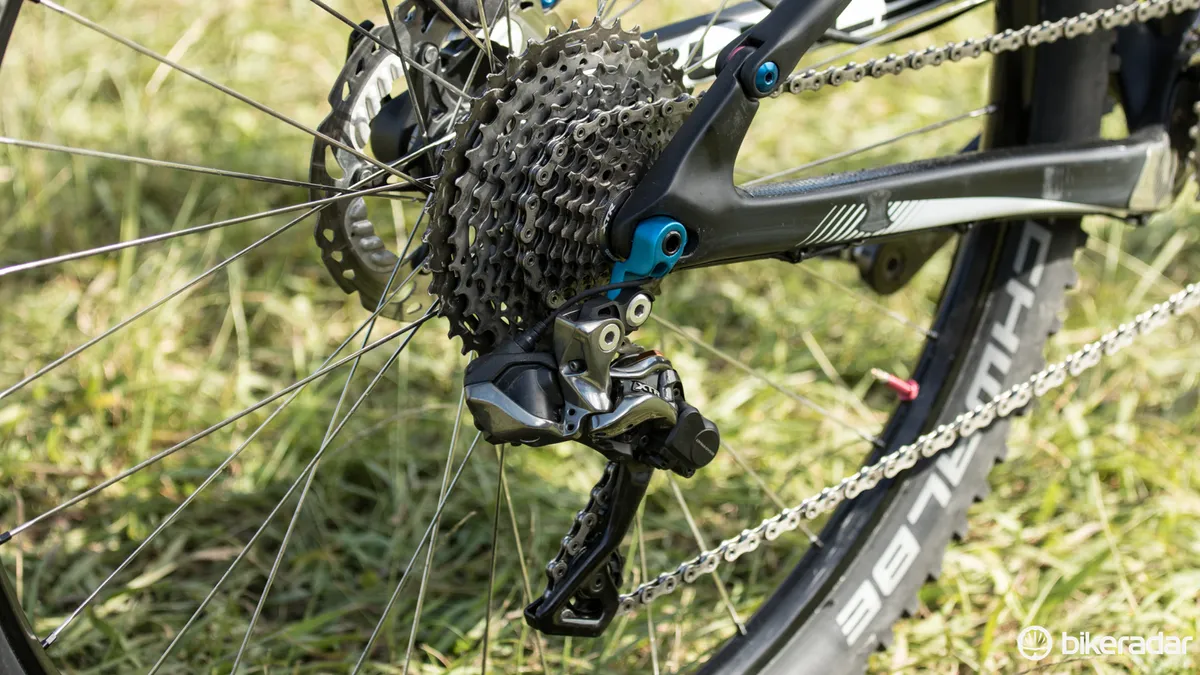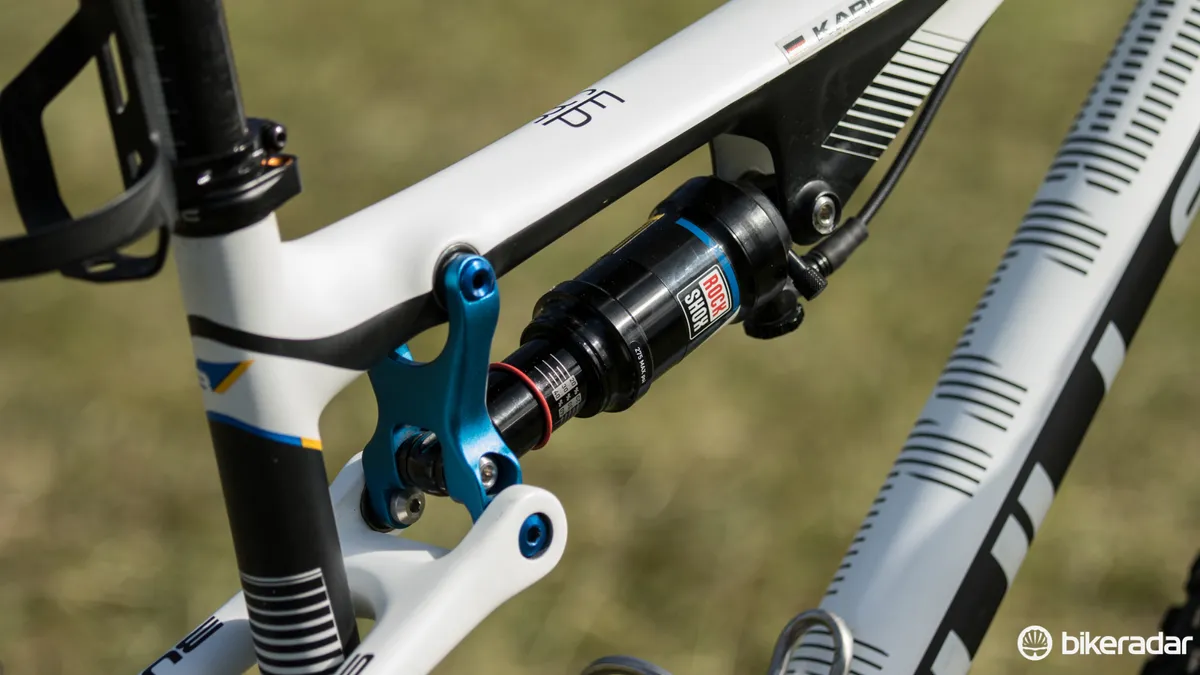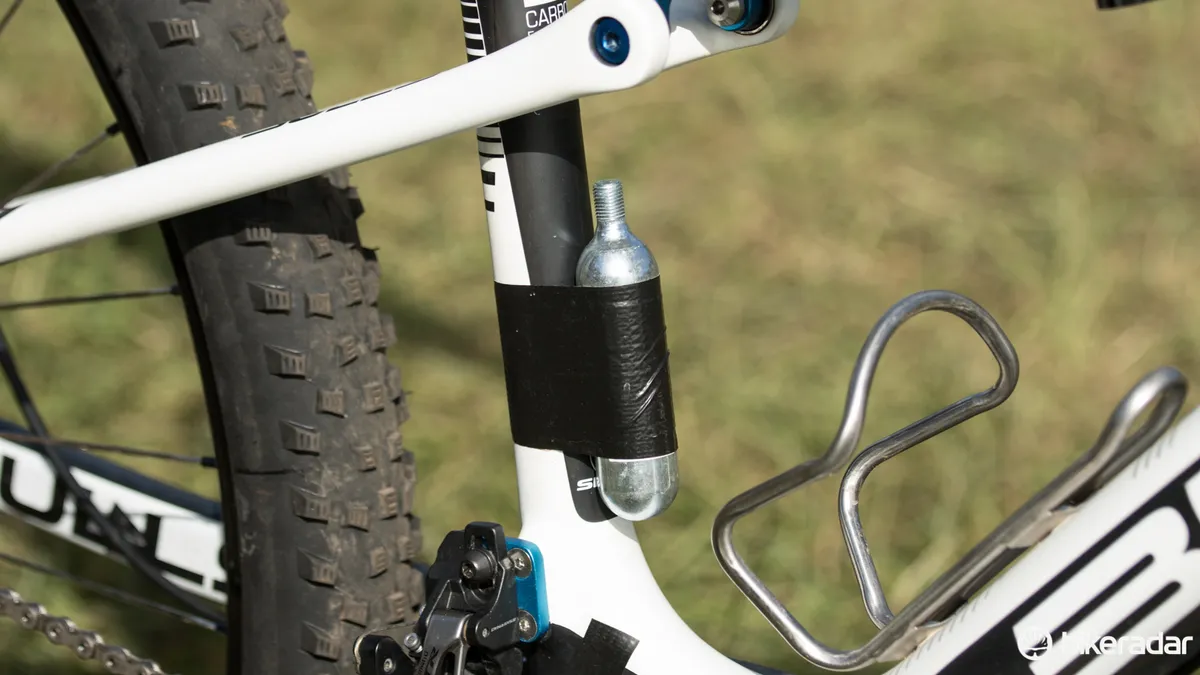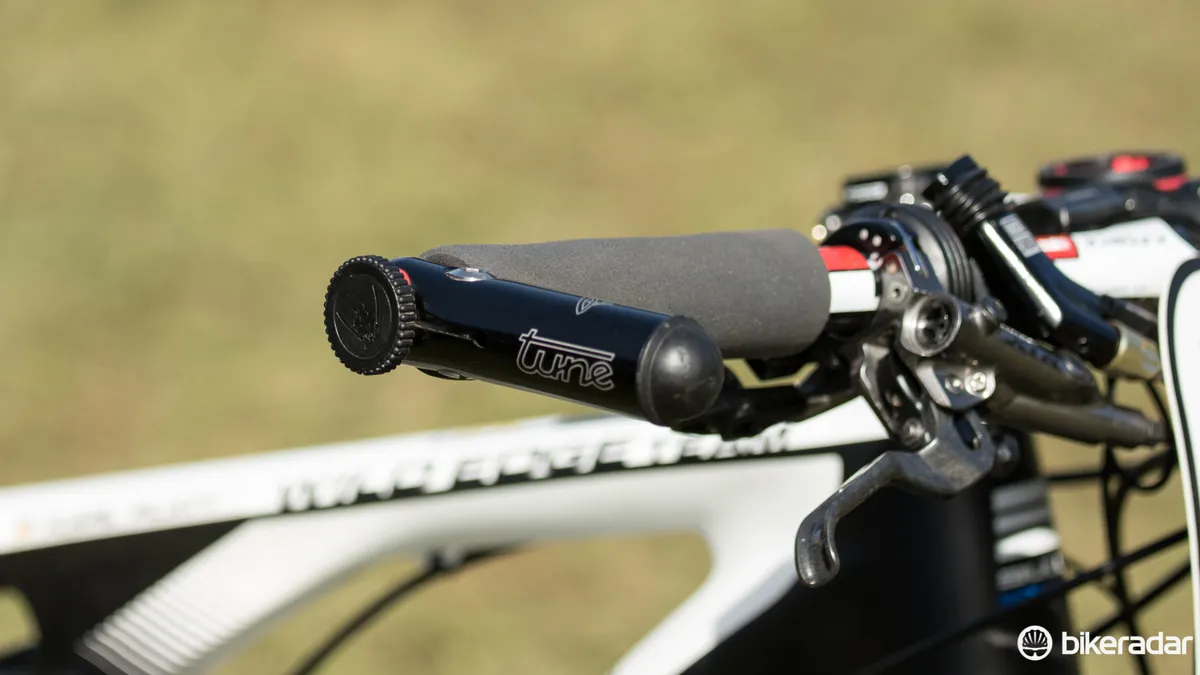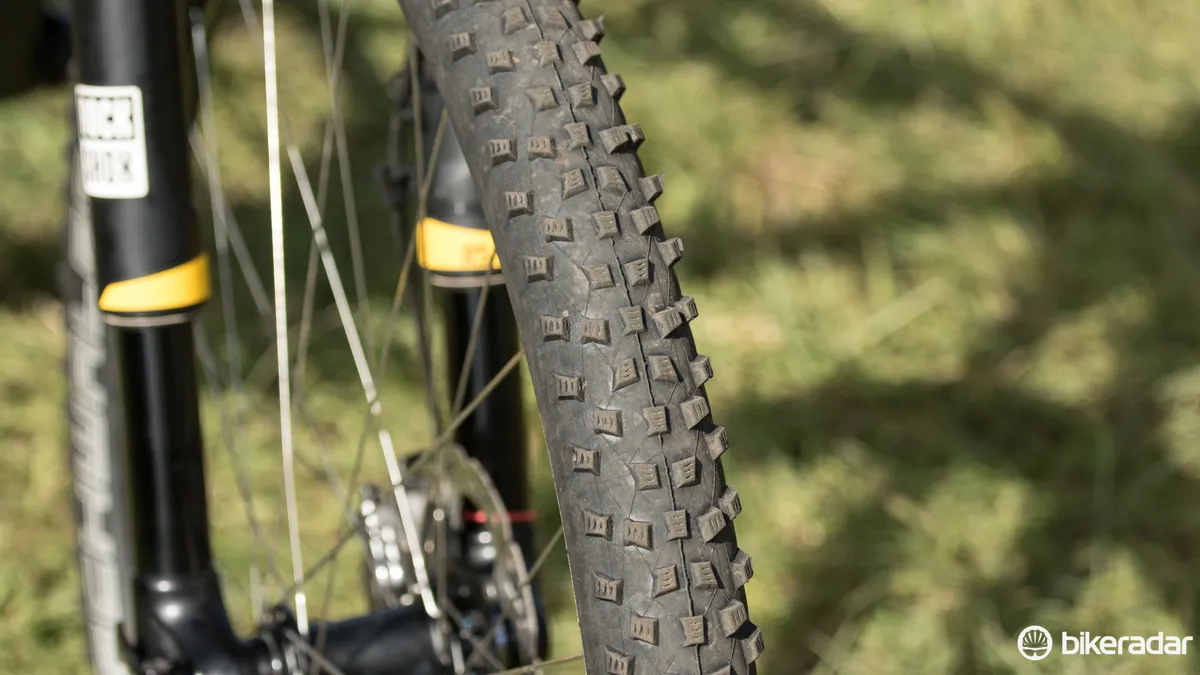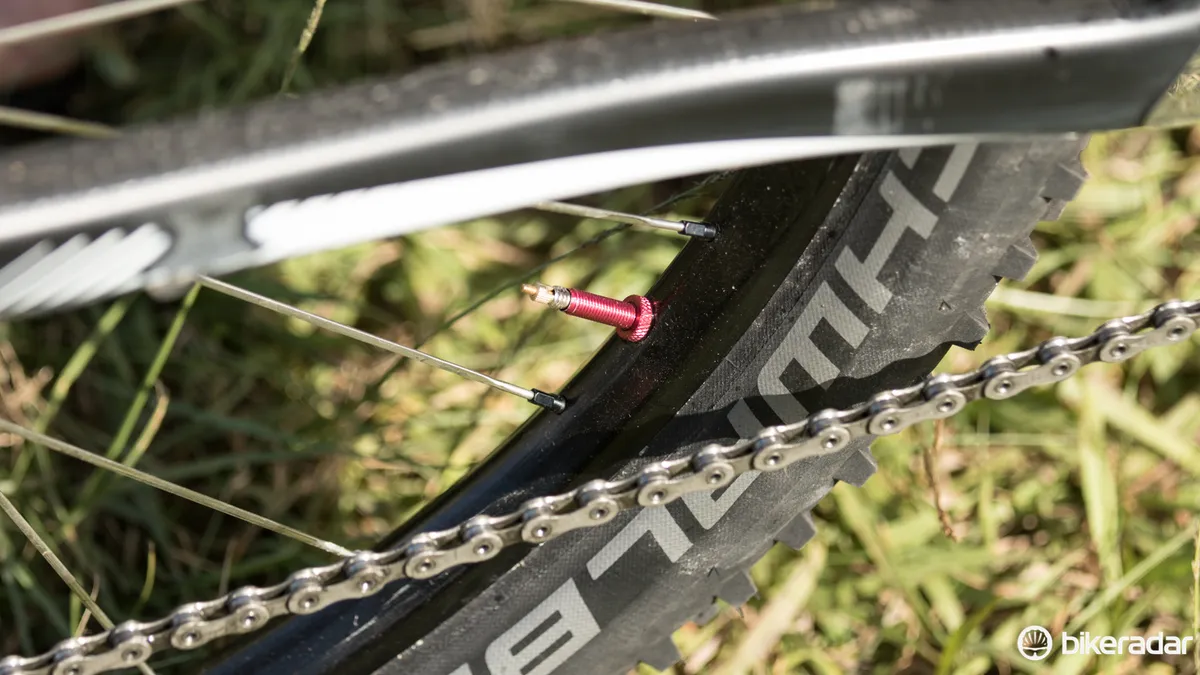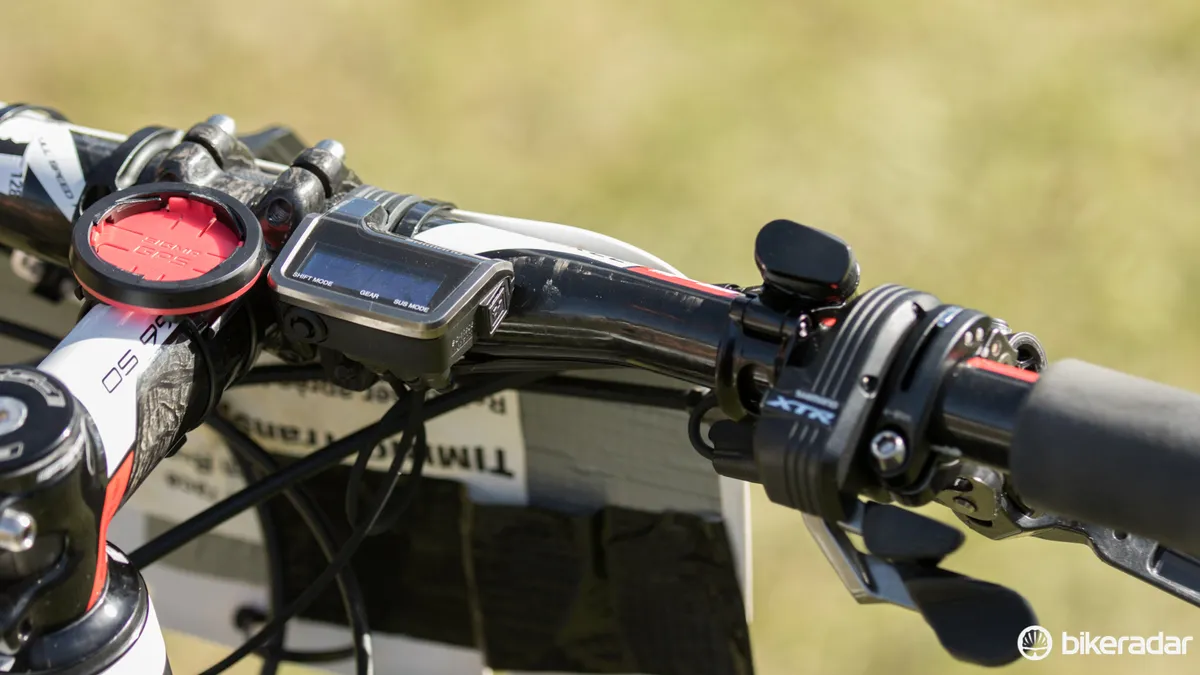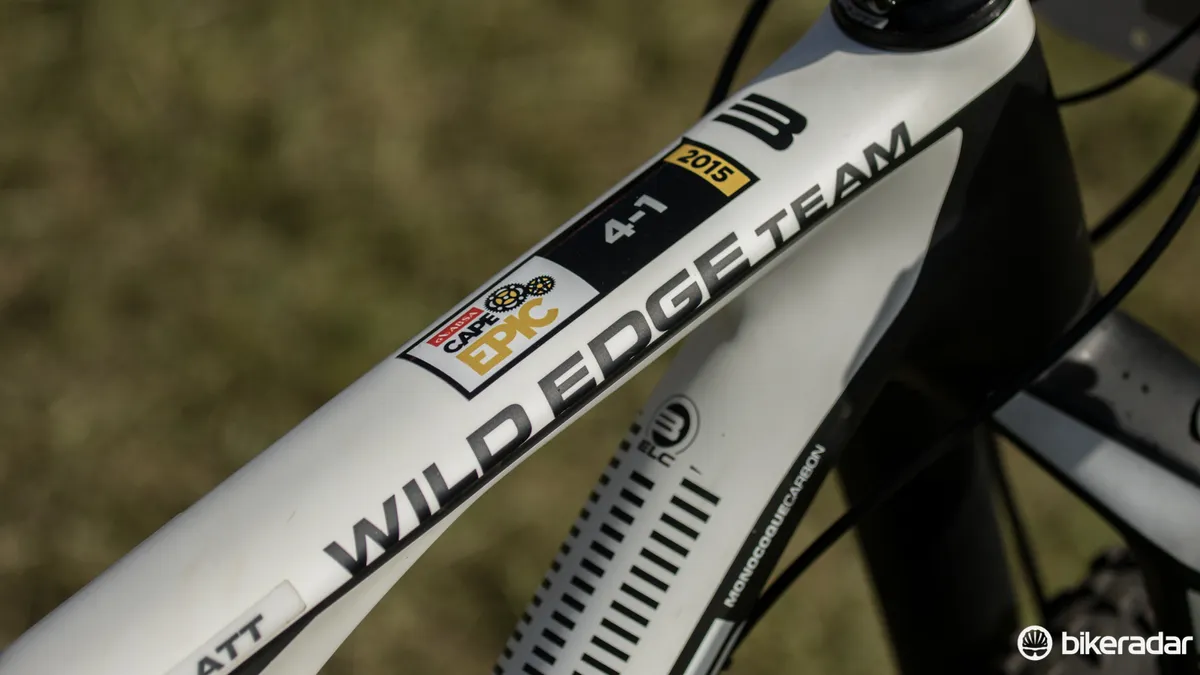Karl Platt along with teammate Urs Huber entered the 2015 Absa Cape Epic in fine form, a race Platt had won four times prior. Unfortunately, it wasn’t their year as the pair finished third overall. It was the combination of Jaroslav Kulhavy and Christoph Sauser which proved dominant during the 8-day race.
Along with his four Cape Epic wins, Platt is a six-time winner of the Transalp Challenge. There’s little disputing the German rider is one of the world’s very best multi-day endurance mountain bikers.
Riding for the marathon-specialist team of Bulls Racing, Platt has access to the German brand’s hardtail and dual suspension bikes. A race as rugged as the Cape Epic means that Platt and his closest competitors all choose to ride 29in wheeled, short travel, and light weight dual suspension bikes.
Selling for €4,999, the Bulls Wild Edge Team 29 bike is a near replica of what Platt and the team race with. The full-carbon frame offers 100mm of rear wheel travel from a linkage-driven single-pivot layout.
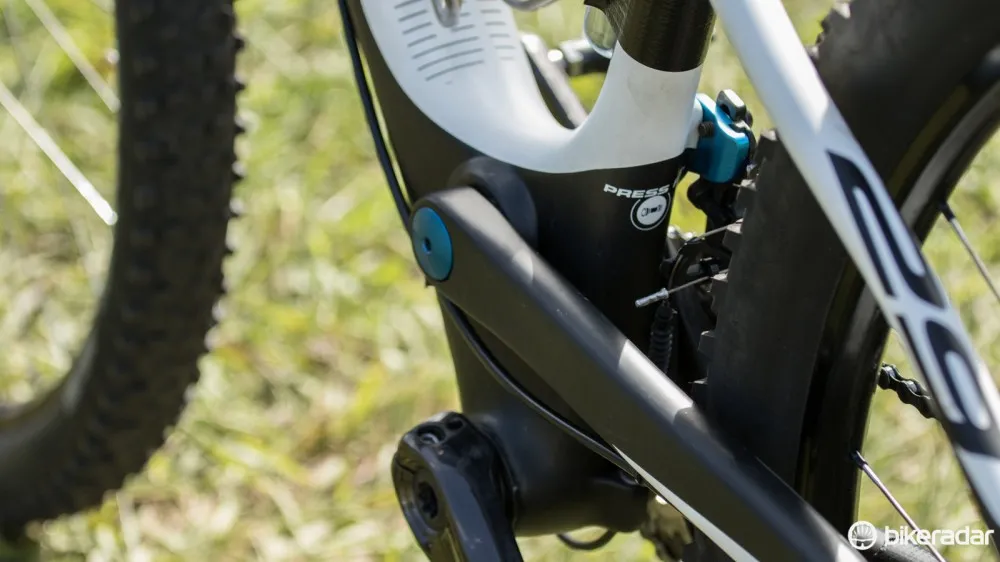
Direct-mount front derailleur and press-fit bottom bracket are commonly seen features on modern race bikes
The Wild Edge Team has all the usual features of a pro-level frame, including asymmetrical chainstays, press fit bottom bracket, 142x12 rear thru-axle and a tapered headtube.
Suspension duties are handled by the new upside-down RockShox RS-1 front fork and a XX rear shock. Both shocks are linked to a single ‘Full Sprint’ Xloc remote at the handlebar for quick and easy full lockout of the bike’s suspension.
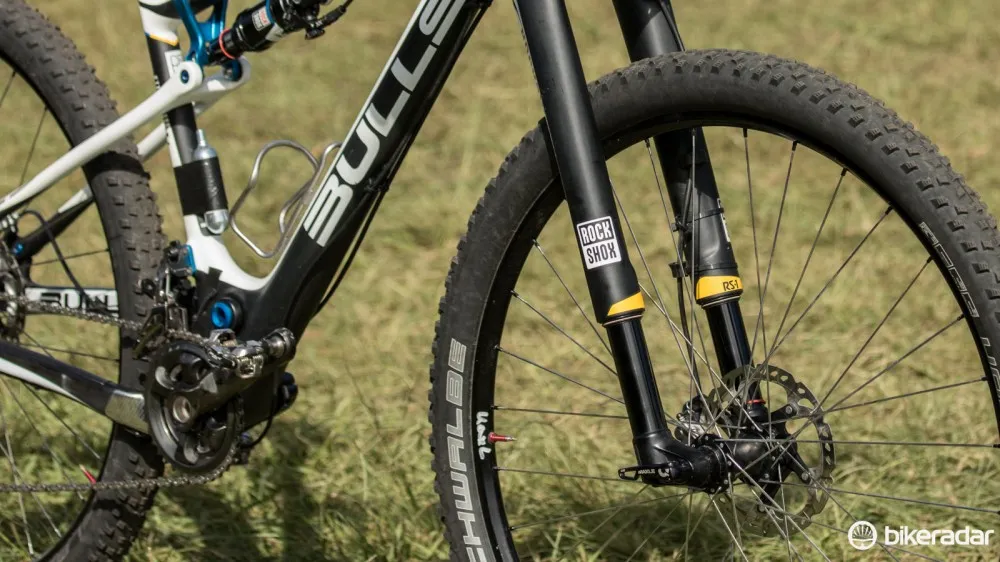
A RockShox RS-1 sits up front
With the top four finishing men’s teams all on the RockShox RS-1 fork, it sure seems this new model is up to the rigors of endurance racing. One less obvious benefit to the upside-down design is that dirt and grit can’t pool at the seals, leading to greater durability in severe conditions.
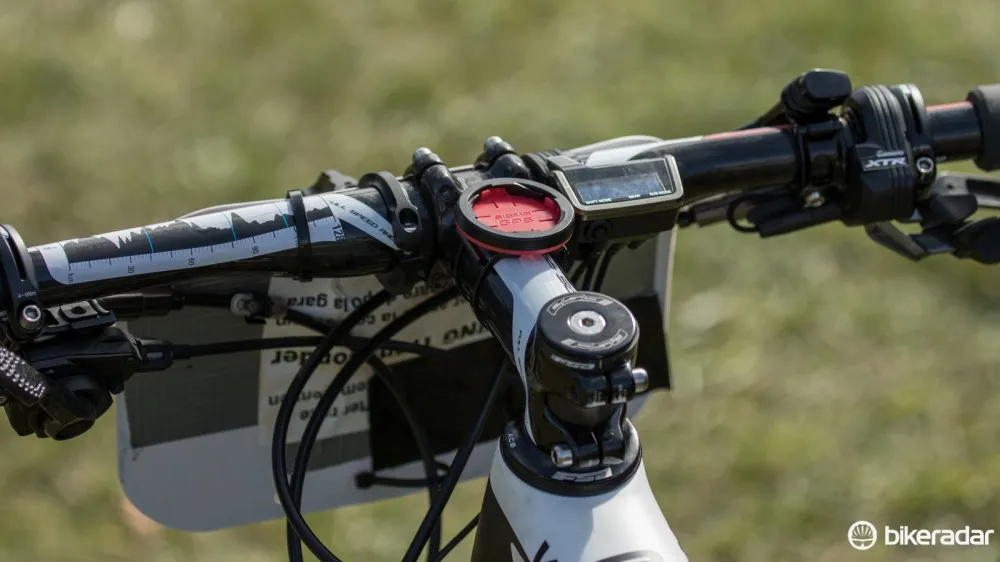
Di2 at the right hand, mechanical shifting at the left
Since it was launched in 2013, this frame lacks compatibility with Di2 gearing; something we’re told Bulls will resolve in future releases. With this, the Bulls team could use a full Shimano XTR mechanical drivetrain, but instead have chosen Di2 for rear shifting and mechanical at front.
We heard Platt stating that he really likes the Di2 for its ultra dependable shifting and the little effort required to shift. Modern clutch derailleurs have increased shift lever resistance and so the light shift effort of Di2 is likely favored multiple hours into a mountainous stage.

The near effortless shifting of Di2 is likely a huge bonus on long stages
Even with Di2’s clear benefits, it remains an odd choice with the weight of the battery (in the seatpost) and control unit not shared between both derailleurs and shifters. It would likely only require a small hole to be drilled near the front derailleur to complete the Di2 installation and so the mixed group puzzles us.
The Shimano XTR brakes are a slight hybrid of models in order to reduce weight without giving up performance. At the handlebar sits the Shimano XTR M9020 Trail brake lever, with external lever reach and servo-wave adjustment, these offer superior power over the lighter M9000 ‘Race’ version.
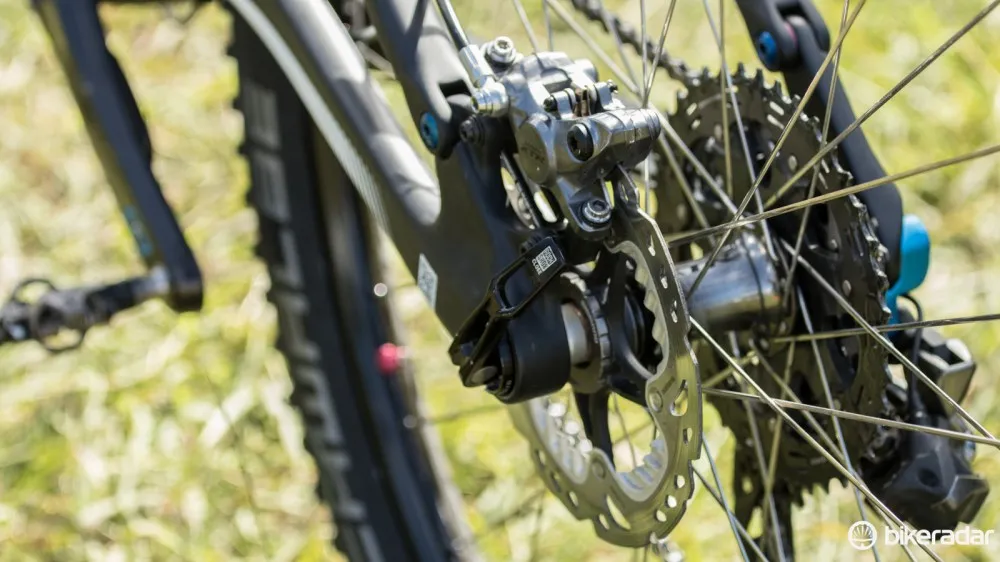
Non-finned brake pads are used for less weight
Connected to the levers are standard M9000 calipers which use lightweight, non-finned titanium-backed sintered pads. As stock, titanium bolts are used for further weight reduction.
The bike features a Shimano IceTech rotor at the rear wheel only, a simple explanation for this being that the new Shimano RT-99 rotor is only available with the company's centerlock standard. The SRAM front hub required for the RS-1 fork means that the front rotor is an older XTR 6-bolt item.
Holding these rotors in place is the pairing of a Shimano XTR M9000 rear hub and aforementioned SRAM ‘predictive steering’ front hub. These are laced to 320g un-labeled Stan’s Race Gold rims with lightweight Sapim CX-Ray spokes. Alloy tubeless valves from Tune save further grams over standard valve stems.
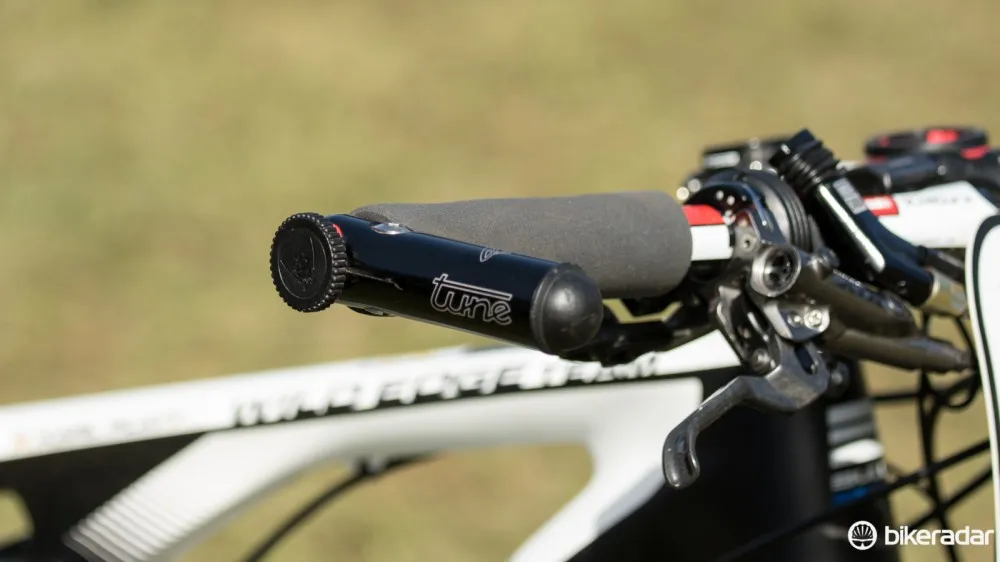
Perhaps out of fashion, but a few top endurance and cross country riders still use bar ends
Like a few other endurance specialist riders, Platt uses bar ends for an alternative hand position and further aid on extended climbs. His choice is a pair of 55g alloy stubs from German company Tune. They are certainly a premium option at US$105 for the pair.
Elite riders avoid the extra weight of a hydration pack and instead carry water on the bike. The single bottle cage on the Bulls frame is not enough and so Platt has a side-access bottle cage mounted directly to the seatpost. This is achieved via a pair of Specialized Rear Cage clamps – a common accessory at the Absa Cape Epic.

Power data provided by Stages
Power meters are still not commonplace in stage races like the Absa Cape Epic, but this is changing with Jaroslav Kulhavy, Alban Lakata and Karl Platt all riding such devices. Platt uses a Stages cycling power meter, which adds approximately 18g to the Shimano XTR left crank arm. Given the endless dust and pressure washing, the Stages’ battery cover was covered with a piece of duct-tape.
Designed by former Bulls teammate and business partner Stefan Sahm, the Sahmurai Sword tubeless puncture repair kit is featured on all the Bulls' team bikes.
Without his Sigma ROX computer but otherwise fully loaded with accessories including a GoPro, Platt’s ride weighs a rather hefty 11.4kg (25.08lb) – proving durability is a crucial aspect of a bike for the Absa Cape Epic.
Complete bike specifications
- Frame: Bulls Wild Edge Team 29, size medium
- Rear shock: RockShox Monarch XX, with XLoc Full-Sprint lockout remote
- Fork: RockShox RS-1 100mm, shared XLoc Full-Sprint remote with rear shock
- Headset: FSA integrated
- Stem: FSA OS-99, 110mm, -6 degree
- Handlebar: FSA K-Force carbon flat, 690mm
- Grips: ESI silicon
- Front brake: Shimano XTR M9020, Race pads, 160mm 6-bolt rotor
- Rear brake: Shimano XTR M9020, Race pads, 160mm IceTech centerlock rotor
- Rear derailleur: Shimano XTR Di2 9050
- Shift levers: Shimano XTR M9000 left, Shimano XTR Di2 M9050 right
- Cassette: Shimano XTR M9000 11-40T 11-speed
- Chain: Shimano M9000
- Crankset: Shimano XTR M9000, Stages power meter, 175mm, 36/26T chainrings
- Bottom bracket: Shimano pressfit
- Pedals: Shimano XTR M9000
- Front wheel: Custom – SRAM ‘predictive steering’ 110x15mm front hub, Sapim CX-Ray spokes, Stans Race Gold 29 rim
- Rear wheel: Custom – Shimano XTR M9000 142x12mm rear hub, Sapim CX-Ray spokes, Stans Race Gold 29 rim
- Front tyre: Schwalbe Rocket Ron Evo Snake Skin 2.25in, setup tubeless
- Rear tyre: Schwalbe Rocket Ron Evo Snake Skin 2.25in, setup tubeless
- Saddle: Fizik Antares R1 braided
- Seatpost: FSA K-Force
- Bottle cages: Alloy silver on downtube, Specialized Zee Carbon Right on seatpost (mounted with Specialized Rear Cage clamps)
- Other accessories: Tune bar ends, Sahmurai Sword plug kit, Tune Alloy tubeless valve stems, Sigma ROX 10.0 computer, GoPro Hero 4 (Cape Epic supplied)
Critical measurements
- Rider's height: 1.79m (5ft 9in)
- Rider's weight: 68kg (150lb)
- Saddle height from BB, c-t: 725mm
- Saddle setback: 50mm
- Tip of saddle to center of bars: 545mm
- Seat tube length (c-t): 460mm
- Head tube length: 105mm
- Top tube length (effective): 590mm
- Weight: 11.4kg (25.08lb)(as pictured with GoPro, but without Sigma computer)
For a closer look at Karl Platt’s Bulls Wild Team Edge, click or swipe through our gallery up top.
